
This marks the 35th display of the Cartier Collection of high jewellery pieces (All photos: Cartier)
While other jewellery houses may prioritise new innovations, the legendary house of Cartier wears its tremendous heritage on its sleeve, which speaks of its confidence in the enduring appeal of its creations.
Proof of this lies in the French maison’s latest exhibition, Crystallization of Time, currently on view at the National Art Center of Tokyo, Japan. This marks the 35th display of the Cartier Collection of high jewellery pieces. The first, 1989’s L’Art de Cartier at Musée du Petit Palais in Paris, was the start of institutional fascination with what makes a Cartier creation what it is. That the majority, if not all, of the subsequent exhibitions were requested and curated by museums and galleries is a testament to the continuing regard for Cartier’s artistry beyond ornamental art.
But Crystallization of Time is the first time Cartier has accorded singular focus to its more contemporary pieces of the last 40 years, from the 1970s until today. However, like in several past exhibitions, the jewellery pieces are shown with those from earlier periods to highlight the continuity of its designs. Another interesting fact is that about half of the 300 exhibits are privately owned pieces, many of which have rarely been seen in public.
Why would an exhibition on jewellery be given a title related to time? In comes the other half of the equation in this showcase, namely New Material Research Laboratory (NMRL). Described as an architectural firm, the outfit consists of architect Tomuyuki Sakakida and photographer/artist Hiroshi Sugimoto.
c2.jpg

During a visit to Cartier’s Parisian atelier last year, Sakakida says he was transfixed by the sight of the maison’s craftsmen painstakingly working on the precious stones that are at the heart of each Cartier piece. A visit to one of NMRL’s architectural creations offers a clue as to why the duo are obsessed with materiality and its natural expression — their works tend to amplify their surroundings rather than supplant them.
It is this same spirit that they carry into their collaboration with Cartier because while the aestheticism of the partners is at the opposite ends of the spectrum — one in its most natural form, the other manipulated to create the strongest sense of shine and beauty — the commonality lies in the starting point of raw materials. And that is what Sakakida and Sugimoto focused on, creating a labyrinth within the National Art Center where time is suspended and the superfluous stripped back in order to refocus attention on the fundamentals of the creative process.
As we stepped through the double-door entrance of the centre into a blacked-out corridor and turned the corner, we encountered a giant clock mechanism sitting right in the middle of the pitch-black walkway. A faint sound could be heard, urging a closer look at the clock’s face. Here, we see that time is moving backwards, heralding a virtual step back in time that Sugimoto wanted each visitor to feel before entering the inner sanctum.
Going with the theme of time is the prologue of the exhibition with its display of Cartier’s Mystery Clocks and Prism Clocks. By now, one is getting used to the disorientation of the space, succumbing to a sort of floating sense of existence without night or day. This feeling is strengthened by surrealistic 12 light pillars that showcase the clocks, representing the 12 index numbers on the dial and, more poetically, glimmers of light shining from above and down to earth where the natural ore lies.
01_prologue_-_space_of_time.jpg
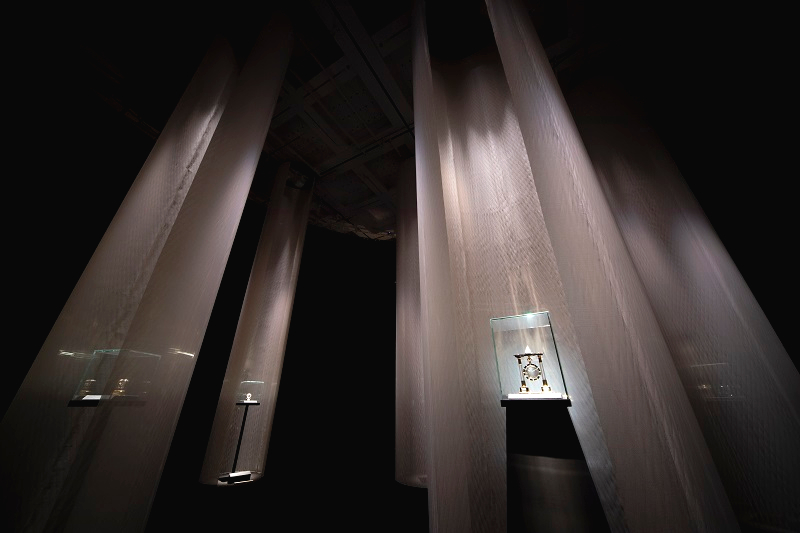
The light is rendered by fabric, specifically a double-layered Japanese fabric called futsuori, which is manipulated from dense to sparse through a weaving technique called ra, in order to create a stunning gradation effect. A Kyoto textile technique, hikibaku, weaves foil into the fabric itself for its elegant movement.
The clocks offer a glimpse of the elements in a Cartier creation, which are divided into three chapters in Crystallization of Time. A warm light draws us to the first — a space where it all begins with materials and colours.
Lighting is kept warm but dim in this room for one purpose — to emphasise the shimmer that emanates from the pieces displayed. “The idea to make jewellery play with light is something very important to Cartier,” says Pierre Rainero, the brand’s image, style and heritage director, as he points at a garland-style, neo-classical-inspired tiara from the early 20th century.
russian_tiara.jpg
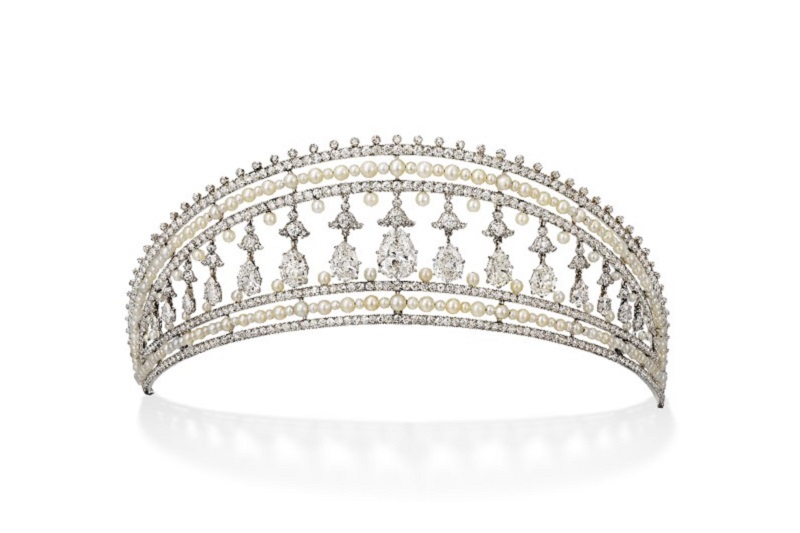
A Russian tiara from 1908 is shown next, whose hints of early modernist architecture that is more structured with cleaner lines are reflected in today’s pieces. Displayed alongside is the brand’s famed trinity bracelets from 1977 and 1986, together with a private collector’s diamond necklace made in 2014. Here, the focus is on Cartier’s work with gold, platinum and even steel as we view a historic blackened steel tiara from the collection. Corresponding with that is another in steel and gold made in the 1980s. While not shown, Cartier’s Santos watch that appeared in 1979 in steel and gold was a success due to its mix of materials. Nevertheless, we are told that the use of materials is always to support but never outshine the key element of the jewellery, which is the stone.
We move on to the gemstone-engraving techniques used by the maison, from their origins in India to those produced in-house today by a dedicated glyptician since 2009. Other techniques displayed include enamelling and marquetry, the pastel hues of which have become a hallmark of Cartier, in direct contrast to its one-time rival in enamelling — Fabergé — which is known for its bright colours.
02a_chapter_1_-_material_transformation_and_color_necklace.jpg
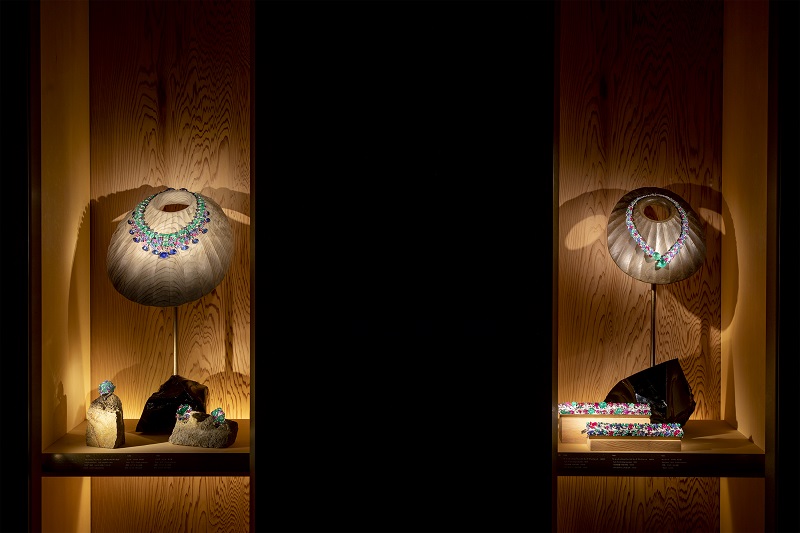
When it comes to the colour of gemstones, however, only the most vibrant and exquisite will do. Showcased are the play of similar colours, such as green and blue, as well as contrasting colours — the so-called Tutti Frutti creations of rubies, sapphires, emeralds and diamonds as well as traditionally unmatched hues of violet and blue.
Illustrating the last is the amethyst and turquoise bib necklace gifted by the Duke of Windsor to his American wife Wallis Simpson, the Duchess of Windsor. A contemporary iteration in the form of a bracelet with turquoise and amethyst beads in 2002 is shown alongside.
Chapter 2 highlights the structure and backbone of jewellery making, its form and design. Accompanied by a scenography of volcanic rocks artfully arranged by NMRL, it divides the space into six sub-categories, giving visitors a walk-through of possibly every Cartier jewellery style within one room. Starting with the essential lines section that marked the genesis of its purity of line concept that pre-dated the Art Deco era, we see how it morphed into geometric and architectural inspirations from the 1930s. Here, a platinum and rock crystal with diamond bracelet pays tribute to an earlier one owned by American actress Gloria Swanson, who acquired her famous piece in 1930 when she lived in Paris with her French husband.
hp600345_2.jpg
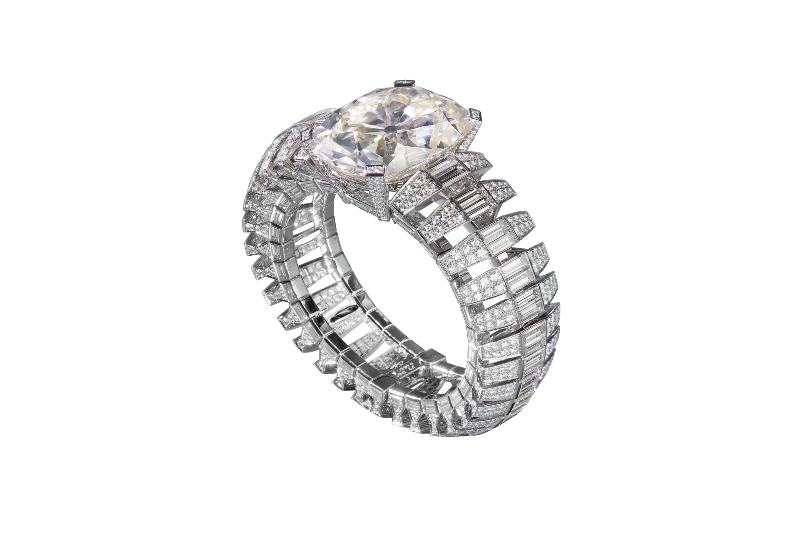
But perhaps the most extraordinary piece of architectural geometry is one from 1937, originally made for an Indian maharajah. Showcasing one of the most important sets of Burmese rubies in a single setting — it would be impossible to gather so many of this quality today — the necklace passed on to the Guinness family later on and was reduced to fit a lady with a smaller neck. Now it belongs to the Al Thani collection of the Qatar royal family.
Drawing a parallel is another special order, this one with emeralds shaped like drops encircling the length of the necklace. Each one is detachable and can be reassembled into a tiara. Unlike the former, this design straddles both architectural and organic styles.
The second half of Chapter 2 showcases Cartier’s non-conformist spirit as we viewed the quirky Crash series of watches, along with their industrial-inspired creations such as nails, TV, carburettor and gas pipes, and pieces inspired by movement and speed as well as those drawn from the world of fashion and couture.
In between the chapters, Sugimoto and Sakakida created transformational spaces where selected thematic pieces are placed alongside Japanese artefacts selected by Sugimoto, an arrangement that is exclusive to this Japanese exhibition. Of the spaces, the corner dedicated to the iconic Cartier Panthère is most alluring. Another section worth spending some time at is the archive room with key documents of Cartier’s design and aesthetic philosophy on display. Among them is the oldest document from Cartier’s library, which happens to be a book on artistic Japan dating back to 1889.
_universal_curiosity.jpg
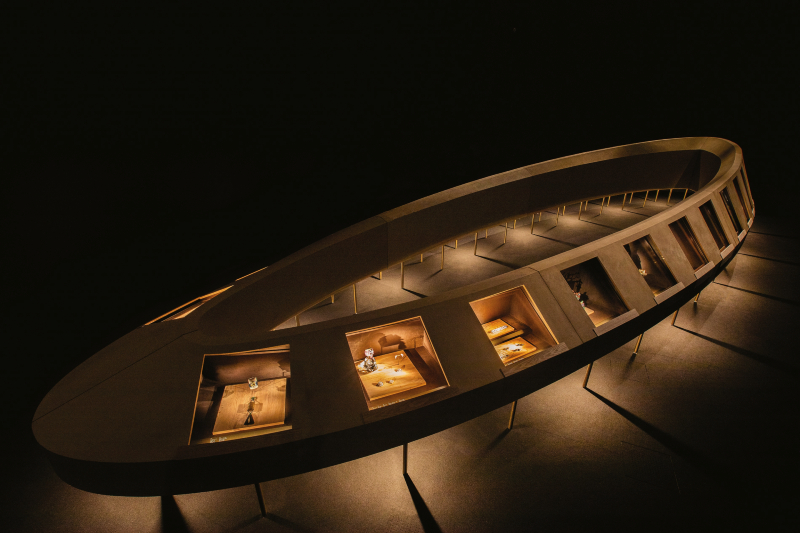
Stepping into the last room of Chapter 3, titled Universal Curiosity, one comes full circle in the universe of Cartier by seeing all the elements that shape its work, maximised in some of the rarest and most unique one-off creations inspired by nature, cultures and countries. NMRL created a futuristic sphere-shaped display in this room with windows housing each piece around it. Apparently, it is a reference to the uniqueness of our world and the many inspirations that shape it. For Sugimoto, it is also like the eye of God and the world seen from above with all its differences.
One thing is for sure, the pieces highlight artistry at its zenith at each turn of those who, no matter the time in which they were made, were as dedicated to their craft as they are today. They pay homage to a world of inspiration — from Japanese gardens to Chinese mother of pearl, tigers, crocodiles, cobras, scarabs, Mayan gold and African ceremonial ornaments — immortalised in timelessness.
'Crystallization of Time' is showing until Dec, 16 at The National Art Centre, Tokyo.
This article first appeared on Oct 21, 2019 in The Edge Malaysia.


